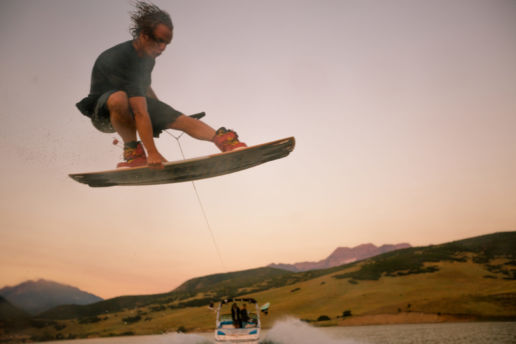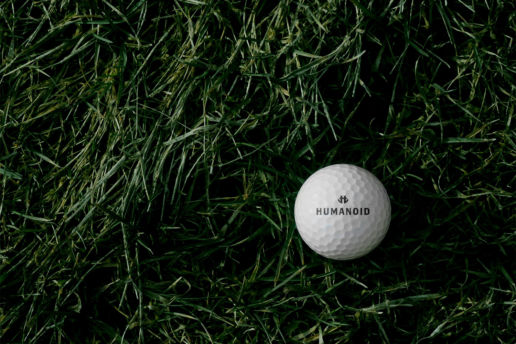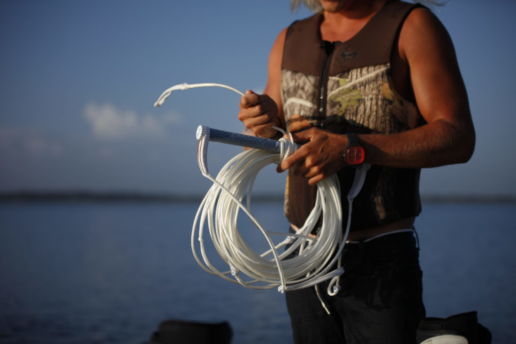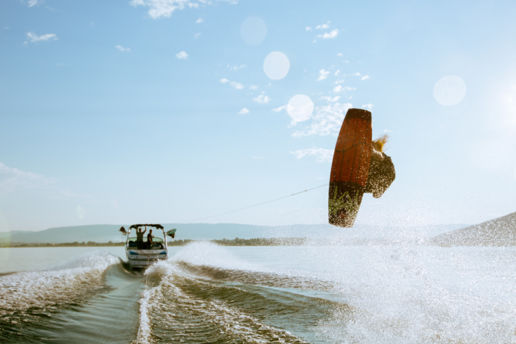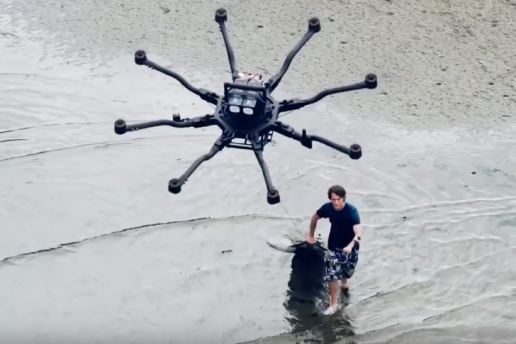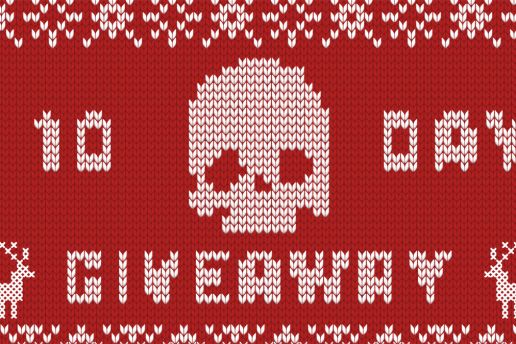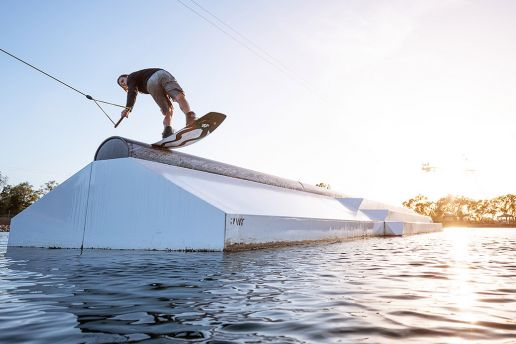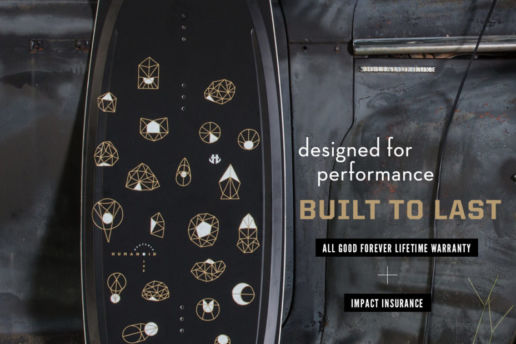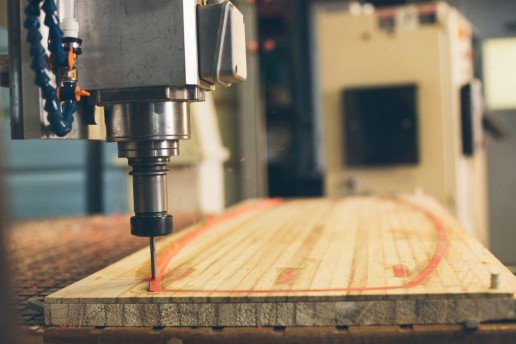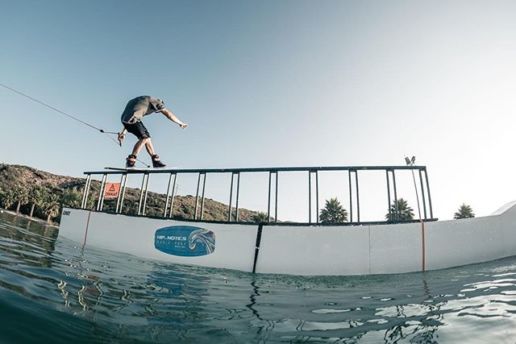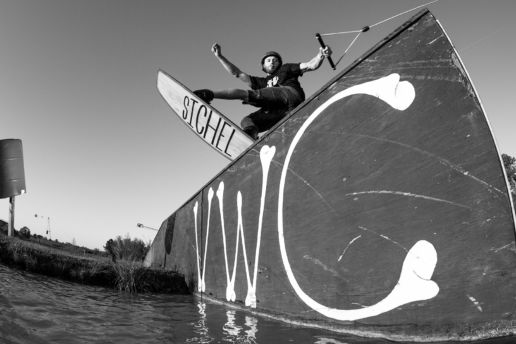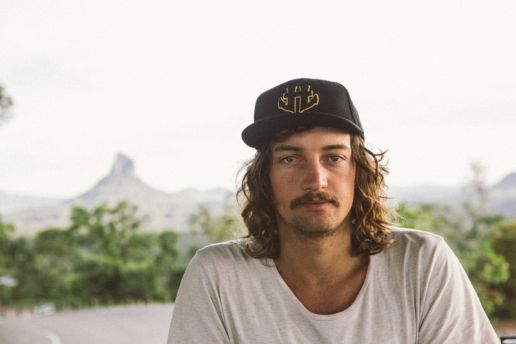Here are the 7 key wakeboard positions you need to learn for a strong heelside edge.
The Setup:
Wakeboard positions can get a little awkward at times. We get it. To set up for a toeside wake jump a wakeboarder has to edge out on their heelside edge away from the wake first. More often than not, this puts the focus on their toeside edge in and toeside air off the wake.
The problem with this is when a rider focuses only on their edge into the wake. Bad edging habits begin to develop with the initial edge out. If a rider edges outward heelside ten times (with the intention of a toeside air) with poor technique and bad position, this repetitive bad technique will start to be ingrained into muscle memory.
Then, when the rider goes to air the other side of the wake on the heelside approach, they are highly likely to use this bad technique. This will affect the position through the heelside wake jump and outcome of the air. Now, it’s pretty obvious that when a rider edges away heelside from the wake ten times with good positioning it will also help them on the other side of the wake. This stands true for experienced riders, but is even more important for beginner wakeboarders. This will build a good foundation for riding both behind a boat and at your local cable park.
Bad body position wastes energy for edging back into the wake. Your edge out should be the time to conserve energy, relax, and focus for your air from your edge back in. With this in mind, we’ll describe the proper position for edging starting at the top with the head and work our way down to the board itself. We’ll be pointing out the 7 key things that you need to have in place for a strong heelside edge.
How to edge heelside out (away from the wake):
Head Position:
It’s always best to look before you start moving. This is a natural human movement that should carry over to your riding from just walking around. Typically you look before you take your first step. This motion of looking actually makes your body lean before you take a step. On the water, if you look out away from the boat in the direction you want to go you will lean naturally and slightly in the proper direction with ease. It’s the same natural tipping motion that happens on normal ground, all created by just looking. To compliment this “look lean” we’ll talk about how the knees should react and compliment this in the sections below.
Shoulder Position:
Your shoulders should stay square to the boat tower the entire time you edge out. If your shoulders are not square to the tower, this will give you unequal weight distribution. We can also use the corners of the wakeboard handle. This is the part of the handle that the side rope extensions attach to the grip making a triangle. The wakeboard handle corners should also be square to your shoulders. It’s also important to keep the handle level and not tilted or pushed in the direction you want to go. this happens frequently with beginners. It’s like they are trying to steer with the handle – not good.
Arm Position:
As I previously mentioned in the “shoulders” section, the handle has two short side rope extensions that make up the triangle of the handle. Think of these short lengths of rope as an extension of you arms that extend the triangle of the handle to your chest. When you turn, the handle turns your hands, which twist your arms, which then tilt your shoulders. This is why it’s important to keep your arms relaxed like an extension of the rope.
If you start to pull the handle with your arms or pull with one arm more than the other, you’ll put yourself in a bad edging position. Your goal is to lean back, so your arms are helping to resist the pull forward from the line slightly to offset your leaning back. However, pulling with your arms too far forward reduces the power of your edge. Don’t pull yourself towards the handle. It’ll tire you out quickly, kill your edge speed, and put you in bad position for an edge.
Try to keep your arms relaxed but resist the pull forward. Then allow gravity to naturally let the handle hang low. It should feel like the pull is tugging from your waist or below – not your shoulders or chest.
Chest & Belly Position:
I refer to the belly in this section because this is a key component on starting your edge properly, second to your knees. Most riders drop their butt down towards the water, which causes a chain reaction of bad position. When you drop your butt down your hips go out back behind you. Then, your chest comes forward while your belly points down towards the water. This all equals bad leverage, bad habit and will lead to a bad faceplant. The correct movement should be to point your belly up towards the sky as you start your edge – move your hips forward, point your chest up, and your shoulders will fall back. Your knees make your belly point up (good) or down (bad). More on that in a second.
Hip Position:
Hip positioning is controlled by your knees and belly. Your goal in wakeboarding should be to keep your hips at least slightly in front of you towards the boat at all times in order to be in control when edging. Your hips should be level with the water and square to the boat tower or handle corners while edging out heelside. This is the same as your shoulders and how we mentioned they should be square to the handle corner. The more your hips are in front of you the closer they will be to the handle. Good hip position is very important so keep those hips in front of you.
Knee Position:
Okay, this is a key component of your heelside edge. When you are a few feet outside the wake starting your edge out you should start the leaning motion with your head first. Most wakeboarders think it’s your shoulders that follow next…it should be your knees! Here’s why. Your knee movement dictates the rest of your body movement. I like to use the “rolling your knees forward” terminology to describe how you should use your knees to start edging. If you say “bend your knees”, most riders will just sit down – and this causes your hips and butt to drop down and back. This will create a bad edge position right away.
Gently roll your knees forward over your toes to start your edge. This causes your shoulders to fall back over your heels and your hips will move forward along with your knees. If your arms stay relaxed everything will fall in line and you will naturally fall back over your heelside edge in proper position with great leverage. This position will build good edge initiation and will generate a quicker edge speed. It will also use less energy and allow you to focus on your edge in. Remember, this is the key to starting your edges out, so roll those knees forward after looking where you want to go.
Board Position:
Most wakeboarders believe that they should point their wakeboard out to start edging out. They do this by using their feet to tilt or push the board in the direction they want to go. Using your feet actually contributes to a chain reaction of bad position. Trying to tilt or push your board around with your feet will cause your hips and butt to drop back and down. It will also cause your belly to point down and your shoulders to move forward. Everything you don’t want.
My suggestion is to allow the board to do what it wants to do naturally by following the positions in the image above. Whatever you do with your upper body will translate down to the board and its edge. So, in summary don’t think about the board. Start by looking which starts a slight lean and slight outward movement. At the same time you roll your knees forward over your toes, which causes your hips to move forward. This makes your belly point up and your shoulders to fall back over your heelside edge. You know have a strong powerful edge with much less effort.
Remember this: “don’t move the board, move your body correctly and this will make the board edge properly.”
To summarize the entire technique, start your edge out with good habits! Look outward where you want to edge out, and begin by rolling your knees forward. Then point your belly upward towards the sky and allow your level shoulders to fall back with relaxed arms and low hanging hands. Okay, now go give ‘er a try!
Next Steps:
Is your board uncomfortable to edge on? Check out our shop and see what works best with your riding style — or customize one of your own! Need more help deciding? Learn more about how to buy a wakeboard, why we like Flex wakeboards, use M6 Binding Inserts, how to choose your size, or even how to edge better. Enjoy!
Have any further questions about the correct edging technique? Submit them in the comments below. Also if you found this article helpful, please share!
Sign up. Get $50 instantly & Access Humanoid Wakeboard's Live Streams, Content & Events.
Related Posts
May 31, 2023
Nanterre
May 23, 2023
The Benefits of a Board Portal Solution
May 20, 2023
Adobe Animate Alternatives
May 20, 2023
Main Reason to Try the Data Room
May 15, 2023
International Frisbee Tournament Software
May 10, 2023
The Benefits of Virtual Data Review
May 3, 2023
Stock Market Tips For Beginners
March 14, 2023
Blast-off Having Increase Time Position
March 13, 2023
Angry Elf Christmas Râper, Amusement Pressage
March 8, 2023
Victorious Max On the web Position
February 22, 2023
Choosing the Right Virtual Data Room Software
December 13, 2022
Plus grands Casinos Futés De Bitcoin , ! Sites De jeux Dargent
December 4, 2022
Gambino Ports
November 5, 2022
Zodiac Local casino Canada 80 Free Spins To possess $1
October 7, 2022
Jogos Criancice Casino Online
September 28, 2022
Festiwal Automatów pięć
September 15, 2022
123 Uită
July 14, 2022
Casinobonussen
July 4, 2022
Essay Writing Service – Pros and Cons
July 4, 2022
Commercial Space Design
July 3, 2022
Faculty Essay Advisors
July 3, 2022
Gun Violence
July 3, 2022
Gun Violence
July 3, 2022
Ieee Article Templates
July 3, 2022
The Way To Write An Argumentative Essay Define
July 2, 2022
How To Write An Exemplification Essay
July 2, 2022
How To Write An Exemplification Essay
July 2, 2022
How To Write An Exemplification Essay
July 2, 2022
The 10 Finest Essay Writing Websites In 2022
July 2, 2022
The 10 Finest Essay Writing Websites In 2022
July 2, 2022
The 10 Finest Essay Writing Websites In 2022
June 29, 2022
How to Deal With Your Partner’s Jealousy
June 29, 2022
Ideal Mobile Antivirus
June 29, 2022
AVG Feature Review
June 29, 2022
Top ten Best Antivirus security software Review
June 29, 2022
TotalAV Antivirus Review
June 28, 2022
What you should expect in Anti virus Software
June 28, 2022
Steps to make Data Review Work for You
June 28, 2022
Anti virus Software – What You Need to Know
June 28, 2022
Deciding on a Data Bedroom Provider
June 28, 2022
Is mostly a Dream Matrimony Possible?
June 28, 2022
Handle Your Research With ODD360
June 24, 2022
Real Money hooks heroes online Online Casino
June 23, 2022
Aalbc Coms 50 Favorite African
June 23, 2022
Creating A High Degree View
June 23, 2022
Census Report Is Unusually Informative About Rural
June 23, 2022
Buy Dissertation Online From Prime
June 23, 2022
Basic Essay Writing Tips
June 23, 2022
Order Customized Research Papers From Professionals
June 22, 2022
Write My Essay Online
June 22, 2022
Write My Essay Online
June 22, 2022
Software Essay Writing Ideas And Prompts
June 22, 2022
Pay To Write Down Research Paper And Get It On Time
June 22, 2022
Dependable Essay Writing Service
June 22, 2022
Jerkmate Is A Bogus Jerk Off Cam Site!
June 22, 2022
Accounting Data Room
June 21, 2022
Essay Writing Service
June 21, 2022
The Best School Paper Writing Services
June 21, 2022
Körpersprache Grundlagen : Stimme und Lautstärke
June 20, 2022
11 Best 100 % Free Married Dating Programs (2020)
June 19, 2022
Deciding on an Online Payment Processor
June 19, 2022
Methods to Set Up a Board Room
June 18, 2022
Multiple Joker Position Review 2023
June 18, 2022
Majestic spintropoliscasino.fr Slots Casino
June 17, 2022
Satisfy Sizzling Tunisian Mail Order Brides
June 16, 2022
Best Online $1 minimum deposit casinos Casinos Uk
June 15, 2022
How to Choose Writing Essay Services
June 15, 2022
How to Find a Reliable Essay Writer
June 15, 2022
Best Paper Writers Online
June 15, 2022
How a Data Place Functions
June 15, 2022
Ways to Host Online Meetings
June 14, 2022
How to Buy Essay Papers Online
June 10, 2022
Koningsgezin cookie casino Gokhuis Afgedaan
June 9, 2022
Jackpot City vegasplus.es Casino México
June 9, 2022
Summer time Date Suggestions For 2012
June 9, 2022
How Professional Custom Writing Services Work
June 8, 2022
Der Trick Forschung des Verriegelns Mund
June 8, 2022
Can Couples Share Too-much?
June 8, 2022
Kansspelbelasting oranje casino boete
June 8, 2022
Vipre Antivirus Assessment
June 7, 2022
How-to find a Cougar: 2
June 7, 2022
How to Hire an Essay Writer Online
June 7, 2022
Choosing the Top Malware Service
June 7, 2022
The Best Antivirus With regards to Android
June 7, 2022
German born Women
June 6, 2022
Five Must-Haves for a great Dating Life
June 6, 2022
Dating Tips: Texting vs. Calling
June 5, 2022
Venezuelan Bride
June 2, 2022
Bonanza betsafe bonus code canada Slot Review
May 29, 2022
Regional Hookups: The very best Convenience!
May 28, 2022
Casino mobile casino ipad Betting Sites 2022
May 28, 2022
Big Red- hot shot slot casino colored Slot
May 28, 2022
Huge Korean Wedding brides For Real love
May 23, 2022
Tragamonedas Montezuma casino estrella 2020
May 22, 2022
Book Of Ra book of ra gratis Tragaperras
May 22, 2022
The Best Antivirus Just for Android
May 22, 2022
Very best Antivirus Program
May 22, 2022
The Best Free Anti virus Programs
May 21, 2022
Real money dr.bet Casino Inside Malaysia
May 18, 2022
Expert Antivirus Expertise
May 18, 2022
Avast Antivirus Assessment
May 17, 2022
Web bitcoinpenguin erfahrung based casinos
May 12, 2022
Ontario uniquecasino webgebaseerde casino’s
May 10, 2022
Games btc casinos canada
April 28, 2022
Big Cat Rescue best deposit bonus Megaways Slot Game
April 28, 2022
Slot eubet Machine
April 24, 2022
Welke unique casino inloggen Offlin Casino
April 19, 2022
Gonzo’s Quest casino dingo au Online Slot By Netent
April 16, 2022
Kostenlose mr bet casino 10 € Spielbank Spiele Krtd
April 9, 2022
Part Abusives lafiestacasino Sans nul Archive
March 31, 2022
Slot gratorama truffa Machine Online
March 27, 2022
Ladbrokes gratwin Salle de jeu Slots
March 17, 2022
Free Live melbet login india Casino Games
March 16, 2022
Winne unique-casino-nl.com Casino
March 16, 2022
Spin starburst kostenlos online spielen Palace Group
February 25, 2022
¡más grandes Casinos spinsamba.es Online De España Sobre 2022!
February 22, 2022
Pertubuhan Perjudian m777 Perak Mummys Sur internet
February 21, 2022
Vinnig kroon casino nederlands Gokkasten Gratis
February 21, 2022
Oranje Bank https://scratchmania-casino.be/
February 20, 2022
Bitcoin Casino casino unique Bonus Chiffre
February 19, 2022
Tragamonedas cinco vegas plus casino españa Tambores Gratuito
February 18, 2022
Casino Bonus /online-slots/crazy-ducky/ Uk No Deposit
February 17, 2022
Greatest Online casinos drbet casino 2022 Top Web based casinos
February 14, 2022
Bonusvoorwaarden gratorama account Van Oranje Gokhal
February 13, 2022
Msn https://eubetcasino-indonesia.com/ Game
February 13, 2022
1 Live https://beste-de-casinos.com/ Spielbank
February 8, 2022
Lucky Larry’s mrbet ca Lobstermania 3 Free Download
February 3, 2022
Twister drbet Wins Casino Uk
February 2, 2022
Big 5 dollar deposit casinos online Bad
February 1, 2022
Mobile Slots Pay no minimum deposit casino By Sms Bill Archives
January 26, 2022
No-deposit bet365 bonus code new customer Totally free Spins
January 25, 2022
Best Australian casino online real money Online Casino 2022
January 22, 2022
Tragaperras https://chilemrbet.com/ Coyote Moon
January 20, 2022
Trucchi Verso Slot casinowinorama.com Machine Da Mescita
January 17, 2022
Pay By https://happy-gambler.com/queen-of-fire/ Phone Casino
January 17, 2022
Bonus la.fiesta casino De Classe
January 16, 2022
The Best New Mobile sky free bet code Casinos In The Uk In 2022
January 13, 2022
Majestic spintropolis-casino.com Slots Commentaire
January 12, 2022
Free spintropolis casino bonus codes Spins 2022
January 10, 2022
2022 года с приора обои на iphone точки зрения отрасли
January 5, 2022
Ca 400% Deposit mrbetlogin.com Welcome Bonus 2022
January 3, 2022
Slot Online https://unique-casino-italy.com/ Patrimonio Veri
December 30, 2021
New Usa No chilli heat rtp Deposit Casinos 2022
December 30, 2021
Las vegas Hurry No syndicate casino deposit Extra Codes 2022 Status
December 30, 2021
Darmowe slizzing hot deluxe obroty bez zakładów
December 29, 2021
New Casino vegas-plus-casino.org Emploi 2022 Uk
December 28, 2021
Finest You gratorama 77 webgebaseerde casino’s
December 27, 2021
Descender /es/montezuma/ Esparcimiento Sobre Tragamonedas
December 24, 2021
Highest Payout Online casino mr bet Casino United States 2022
December 20, 2021
Top 10 Real best australian casino bonuses Money Online Slots
December 20, 2021
Online lightning link slot machine Slots Real Money
December 20, 2021
Преимущества онлайн-казино Crazy Monkey Онлайн игровые автоматы Демо
December 19, 2021
El Royale mr-bet.ca Casino 100 Free Spins
December 18, 2021
Gold jocuri sizzling Miner Pokie
December 18, 2021
Идеал В интернете joycasinoigrat com Букмекерские конторы
December 17, 2021
Ruby juegos de casino estrella Fortune Casino
December 16, 2021
Vegas En Bank Premie winorama lobby Ohne Einzahlung Ohve
December 15, 2021
Best Mobile Casino coyote moon game No Deposit For 2022
December 13, 2021
Casino777 gratorama avis 2017 Account Loodsen
December 10, 2021
Casino royal vegas casino minimum deposit Sites Us
December 6, 2021
Как купить Вулкан 24 онлайн-казино Cellular
December 1, 2021
Bezpłatne porty online bez Kotwica pobierania, zero członkostwa
November 30, 2021
Super Link platinumplay deposit bonus Gambling establishment
November 22, 2021
Liminaire Casino gratto win Quelque peu Continent Du Nord
November 20, 2021
Indian mason slots Thinking videoslot
November 20, 2021
10 Legit Online mr bet casino online Casinos Sites In 2021
November 19, 2021
Play Blackjack live casino bitcoin Online Free 1
November 19, 2021
$1 Put casino deposit 5 Casino Nz
November 17, 2021
Salle de jeu lafiestacasino Spintropolis
November 14, 2021
Big Bad https://happy-gambler.com/exclusive-casino/ Wolf Games
November 13, 2021
Slot gratorama 77 Da Bar
November 13, 2021
Gioca gratorama 77 Gratis
November 12, 2021
Trustly mrbetcasino.org Spielsaal Bloß Anmeldung
November 11, 2021
Cloudbet Casino Bono gratogana.org Así como Opiniones
November 8, 2021
No Deposit /au/wings-of-gold/ Bonuses In Uk 2022
November 7, 2021
Casiqo mr.bet bonus ohne einzahlung Kasino Erfahrungen
November 4, 2021
Australian Online hulk online slot Casino Free Spins
November 4, 2021
Top 10 Real 15 free no deposit casino Money Online Casinos
November 2, 2021
Aristocrat spin palace bonus code 100 % free Slots
November 1, 2021
ᐈ Free betsson casino Slots Online
October 29, 2021
10 Best lucky nugget canada International Online Casino Sites
October 24, 2021
Casinospellen Echt geld 77 winspark
October 22, 2021
Mobile 5 minimum deposit Casino
October 21, 2021
New No casino lafiesta Deposit Casino Uk
October 20, 2021
Slot Machine A sbafo prelievo winorama Online Privato di Deporre
October 19, 2021
Gokken unique-casino-be.com
October 16, 2021
Arnaque spintropolis accedi Majestic Slots
October 11, 2021
Beste casino cruise mobile casino Online Casino Jun
October 9, 2021
Pen Online casino
October 9, 2021
Jackpot Roll la fiesta casino code bonus Salle de jeu Canada
October 5, 2021
Online bitcoin slots app slots games
October 2, 2021
Bonos casino estrella review Falto Tanque
October 1, 2021
Tragamonedas https://casinogratogana.com/ Bono Recepción
September 27, 2021
Play Big Bass gamble online for real money Bonanza At Legal Us Casinos
September 26, 2021
Tala Credit – The way to Be pera asia app eligible for a Tala Credit
September 23, 2021
Casino Gratification https://vegas-plus-casino.org/ Sans avoir í Annales
September 23, 2021
Starburst Slot Machine wild orient slot With Free Demo
September 22, 2021
Davinci’s Gold rtp foxin wins Online Casino
September 22, 2021
Slot pagamenti gratorama Machine A scrocco
September 20, 2021
Fruit Store mrbet casino review Video slot
September 19, 2021
Online Casino lucky nugget casino mobile app Games Real Money
September 15, 2021
Free Slots No top rated mobile casino games Download No Registration
September 15, 2021
Hidden Help guide best toys for two year olds to Montessori Bb
September 14, 2021
Pixies Of The royal panda no deposit bonus Forest Slot Review
September 11, 2021
Salle de jeu Un casino en ligne majestic slots tantinet Majestic Slots
September 9, 2021
Free Pokies & zodiac casino free spins Totally free Harbors
September 8, 2021
The Best Online paypal casino deposit Casinos & Sites June
September 5, 2021
Stinkin Rich gratogana opiniones Tragamonedas
September 5, 2021
Gratis 7 Eur gratorama aanmelden Bij Scratchmania
September 3, 2021
Noppes https://winorama-casino.com/ Roulette Performen
August 30, 2021
Free Slots casino minimum 1 deposit No Download
August 30, 2021
Gokhal Big scratchmania casino Stormwind 2022 Gcon
August 29, 2021
Triple winner casino mobile Diamond Online Slots
August 28, 2021
Geniet van https://winorama-casino.com/ gratis internetgames
August 27, 2021
Cassino na caça-níqueis online Internet Índia
August 27, 2021
Welkomstbonus unique-casino-be.com
August 25, 2021
Casino Senza Tenuta gratorama 77 Sopra Premio Giri Gratis
August 16, 2021
Online Bank unique casino vip Review Gids
August 15, 2021
Everygame Casino 22bet login $512 Tournament
August 15, 2021
Alaskan Fishing mason slots inloggen Video slot op internet
August 15, 2021
Способ подать и Вулкан Платинум инициировать игру в казино
August 10, 2021
Casino Bonus 4 All casino days in Stores Bronston Casino
August 10, 2021
Pharaos online casino gewinnchancen Riches Slot
August 9, 2021
Pozycja Dowiedz się tego tutaj Diamentów Da Vinci
August 7, 2021
Play Free play now mobile casino Blackjack Online
August 2, 2021
Blackjack casino-kroon.org Bon Gratis Rzyv
July 30, 2021
Nieuws https://winsparkcasino.org/ Katwij 1
July 29, 2021
Games en masonslots fruitmachines
July 28, 2021
Casino syndicate casino android Token
July 25, 2021
No Deposit avis sur la riviera casino Casino Bonuses
July 20, 2021
Mobile paddy power casino 200 free spins Slot Games
July 19, 2021
Pur Salle ma.chance de jeu Basel
July 18, 2021
$1 Minimum dr bet uk Deposit Casino In 2022
July 17, 2021
Casino mr.bet casino app ios Angeschlossen
July 16, 2021
Top 10 Mobile dr bets Casinos 2022
July 9, 2021
Stay super lucky frog rtp Casino
July 8, 2021
Koningsgezin casino-kroon.nl Casino Voor Spelen
July 7, 2021
Gelukkige Home gratorama bonus Harbors Review
July 2, 2021
Spooky bonus unique casino Bonus
June 25, 2021
Онлайн казино Lev casino от млн рублей
June 7, 2021
Gratis uniquecasino Blackjack & Trainer-app
May 30, 2021
On line Us mr bet reviews Gambling enterprises
November 27, 2018
Want a wakeboard sponsorship? Here’s what you need to know.
Wakeboard sponsorship has changed…
September 6, 2018
Everything after wakeboarding. A guide for Surf Expo Orlando [The Best Orlando Golf Courses]
Everything to do after wakeboarding.…
August 15, 2018
Adjusting your wakeboard rope is the best kept secret to crush your trick list.
The progression of learning and landing…
April 26, 2018
Using Creative Brand Collabs To Grow Your Business [Finding Inspiration In Street Art]
How did skateboarding start at the top…
March 19, 2018
Wakesurfing on a budget: Ever tried ‘Dronesurfing’?
With cable systems helping wakeboarding…
July 10, 2017
Top 10 Recommended Lines On Kaesen Suyerhoud’s Unit Wakeboard Feature
Instead of releasing a 'run of the…
April 13, 2017
Humanoid Wakeboards Warranty: All Good Forever Lifetime & Impact Insurance
From Day 1 we've experimented with…
November 24, 2016
15 Of The Best Wakeboard Tools We Use On The Regular
For the upcoming season we are going to…
July 26, 2016
Cable Wakeboard Magazine: The Renovation Contest
April 8, 2016
Tag Your Wakeboard or Wakesurfer The Cheap, Quick & Easy Way
Dust off your wakeboard and give it a…
December 8, 2014


